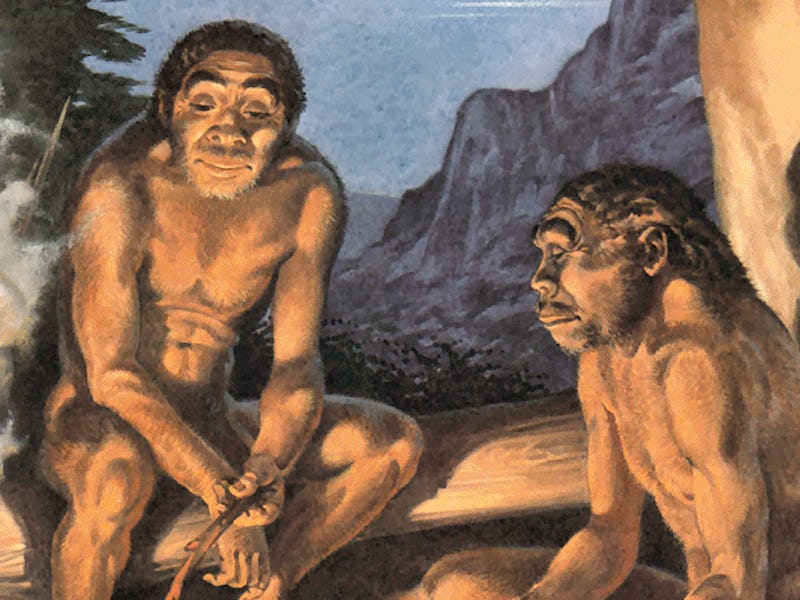9.7 Million-Year-Old Teeth Found in Germany Could Recast Human History
'It's definitely a fantastic, exciting story.'

A startling discovery in Germany has caused scientists to question historical records regarding the evolution of man. Researchers from the Natural History Museum in Mainz announced Friday that they excavated 9.7 million-year-old teeth fossils from the Rhine River. What makes this finding so remarkable is that these teeth appear to be potentially hominin and considerably older than similar specimens found in Africa — a mysterious possibility that could rewrite what we know about where early human life emerged.
In a preprint published by ResearchGate, a team of researchers led by Natural History Museum deputy director Herbert Lutz write that they found two teeth — an upper left canine and an upper right first molar — that are “exceptionally well preserved and obviously come from the body of unknown sex.”
Archeologists found 9.7 million-year-old teeth that might have belonged to a Lucy-like hominid.
It’s believed that these teeth belonged to a great ape that was potentially an early hominin species, one that could have been related to members of the African hominin tribe. The canine tooth, in particular, is indicative that this ancient being is unlike any other specimen found in northern Europe.
“It’s something completely new, something previously unknown to science,” Lutz told ResearchGate. “It’s a complete mystery where this individual came from, and why nobody’s ever found a tooth like this somewhere before.”
The Rhine River in Mainz, Germany.
While Lutz and his team are wary of speculating exactly what this finding means, they are hopeful that this finding can help fill in the holes of the fossil record and a new species could may be added to the family tree. These teeth most closely resemble the teeth of the famous early human Lucy, who existed 3.2 million years ago, and 4.4 million-year-old skeletal remains also found in Ethiopia. If subsequent analysis proves the researcher’s belief that these teeth are indeed 9.7 million years old, that would make this specimen much older — which raises questions about how the heck it got to Germany.
The molar fossil on the left and the canine fossil on the right.
“It’s possible that, with the morphology of this canine tooth being so similar to more recent examples from Africa, the species could be related,” says Lutz. “That would mean that a group of primates was in Europe before they were in Africa.”
The dig site in Eppelsheim, Germany.
Another potential way this ancient European specimen could have had these advanced canines is via the phenomenon of convergence, an evolutionary biology process where organisms that are not closely related still independently evolve to share similar traits, even if they live in different areas and have never interacted. These traits evolve because both groups of organisms had to adapt to similar ecological niches.
Hopefully, answers will begin to emerge as the scientist begin to analyze the specimens. High-resolution x-rays will be used to examine the inner structure of the enamel, which will reveal information about how old the individual was and whether it developed healthily. They will also examine the wear-and-tear on the chewing surface of the teeth, which can indicate what it’s diet was like.
That’s not to say that the researchers aren’t acutely confident they have something big on their hands: They actually discovered the teeth a year ago, and are only now confident enough to publish a paper saying these 9.7 million-year-old chompers are the real deal.
“We want to collaborate with other researchers to process these finds, and hopefully in one or two years, we’ll know a lot more about what we’ve got on our hands,” says Lutz. “It’s definitely a fantastic, exciting story.”
If you liked this article, check out this video of a 99 million-year-old dinosaur fossil.